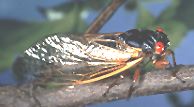- Incomplete expression of measles, Wind
rash or itchy red eyes and pterygium, use with
Mentha
arvensis- Bo he.
[4] Often Wind
Heat dispersing action is strengthened by adding
Chrysanthemum
morifolium- Ju hua and
Morus alba- Sang ye.
[4]
- Hoarsness due to Lung Heat, with
Sterculia
lychnophora- Malva nut.
[4]
- Vent measles, with
Pueraria
pseudohirsuta- Ge gen and
Arctium lappa-
Niu bang zi- Burdock.
[4]
- Wind Heat affecting eyes, with
Chrysanthemum
morifoli- Ju hua, and
Equisetum hyemale-
Mu zei.
[4]
- Night terrors or convulsions due to Liver Wind, with
Mesobuthus
martensii- Quan xie,
Bombyx mori- Jiang
can, and
Uncaria rhynchophylla- Gou
teng.
[4] [1] Barefoot Doctor's Manual- 1977 Prepared
by the Revolutionary Health Committee of Hunan Province. Original Chinese
manual- Victor W. Sidel. Originally published by Dr Joseph Quin and the Fogarty
International centre, Bethdesda (1974). Madrona Publishers Seattle Washington
ISBN 0-914842-52-8
[2] A Complete English Dictionary of Medicinal Terms in Chinese Acupuncture
and Herbalism 1981- Henry Lu Chinese Foundations of Natural Health- The Academy
of Oriental Heritage, Vancouver, Canada.
[3] Translation notes from Gary Seiford and Hocu Huhn- NSW College of Natural
Therapies. Sydney Australia.
[4] Chinese Herbal Medicine Materia Medica- Dan Bensky and Andrew Gamble-
Eastland Press 1986 Seattle Washington ISBN 0-939616-15-7
Images
1.
caf.wvu.edu
2.
kamwostore.com The molted skin of cicada consists of
about 50% chitin,
[1,2] and about
50% proteins; it has small amounts of minerals, amino acids, lipids, and wax,
but no significant amount of known active components.
The cicada skins are predominantly chitin, a polysaccharide that is a structural
component also found in the cell walls of fungi (as well as yeasts and algae)
and in the exoskeletons of insects and other arthropods. Chitin is comprised
of glucosamine and acetylglucosamine (see structure, below), often in chains
of several hundred units. The material is essentially a fiber and is similar
to cellulose (which lacks the amine groups) in plants, and which is second
only to cellulose as the most common structural component of the world's flora
and fauna.
[1]
Hexacosanol, heptacosanol, actacosanol, triacontanol, hexacosanoic acid.
[2]
References
[1]
itmonline.org
Chan tui: Use of Chitin in Chinese Herb Formulas, by Subhuti Dharmananda,
Ph.D., Director, Institute for Traditional Medicine, Portland, Oregon
[2] Chinese Herbal Medicine Materia Medica- Dan Bensky and Andrew Gamble-
Eastland Press 1986 Seattle Washington ISBN 0-939616-15-7
 Cryptotympana
pustulata. C. atrata
蝉
蜕
Chán tuì
Cicada
shell Family: Cicadidae
Cryptotympana
pustulata. C. atrata
蝉
蜕
Chán tuì
Cicada
shell Family: Cicadidae
